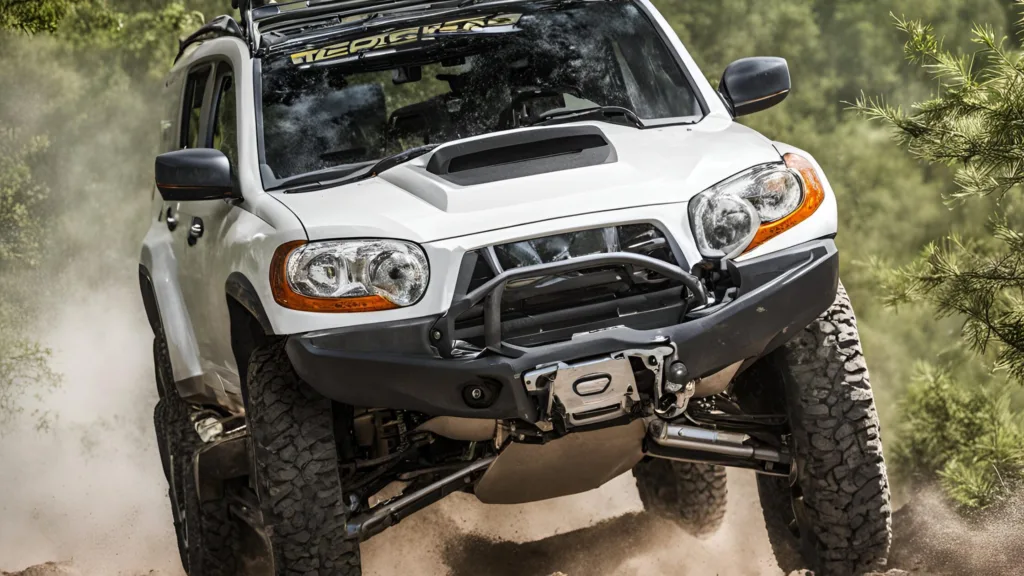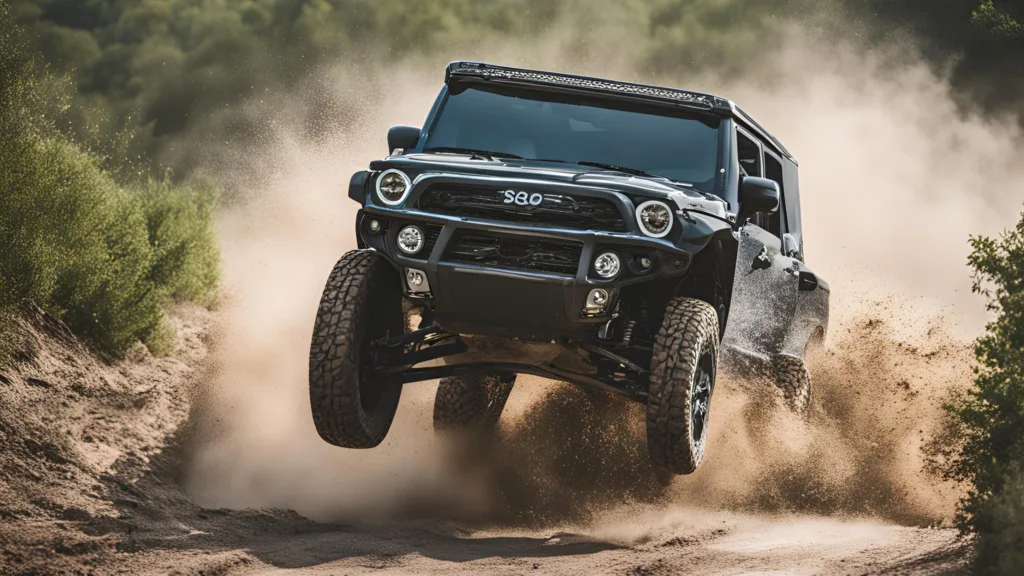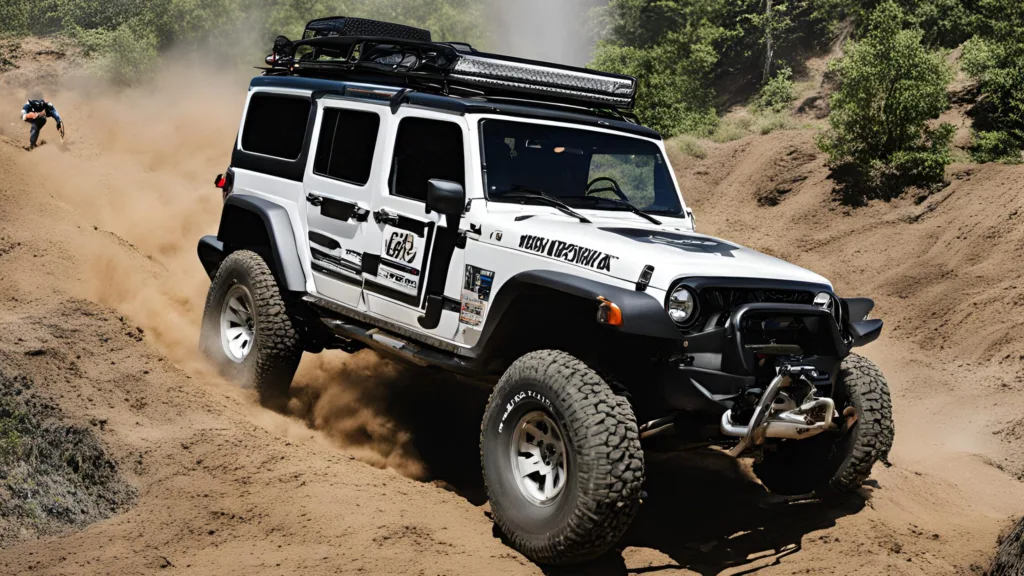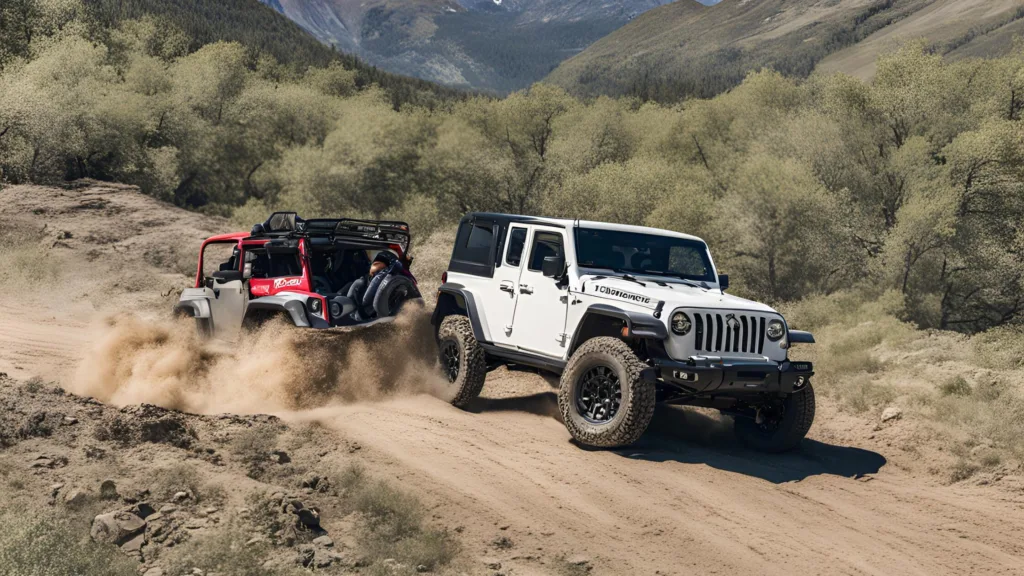For Beginner Off-Road Tips, start with a basic 4×4 vehicle and always prioritize safety. Equip your ride with essential recovery gear before hitting the trails.
Embarking on off-road adventures can infuse your driving routine with excitement and a sense of discovery. Yet venturing into rugged terrain demands preparation, respect for the elements, and a solid understanding of your vehicle’s capabilities. Newcomers to the off-road scene should focus on building foundational skills, like navigating over rocky surfaces and through mud, while maintaining safety as the foremost concern.
Before setting out, familiarize yourself with your 4×4’s features, including differential locks and low-range gearing, and ensure that you have the necessary recovery equipment, such as tow straps and shovels. It’s not just about the thrill; mastering off-road techniques enhances your problem-solving abilities and prepares you for unexpected challenges on the trails. Join a community of fellow off-road enthusiasts to exchange tips and experiences, making your journey into the world of off-roading both safe and memorable.

Gear Up For The Adventure
As you prepare for an off-road journey, the right gear makes all the difference. It’s the armor and toolkit that transforms a regular drive into a rugged adventure. Before diving into the wild, you must ensure complete preparation to tackle any challenge nature throws your way. Equip yourself wisely; it’s not just about having fun but also about safety and readiness.
Essential Equipment For Off-roading
The essentials for off-roading combine utility and emergency gear. Your checklist should include the following items:
- Recovery straps and D-rings – They’re life-savers in stuck situations.
- Air compressor – For managing tire pressure on varying terrains.
- Winch – Adds pulling power for when obstacles get the best of you.
- Tire repair kit – A must-have to fix punctures on the trail.
- Skid plates – To protect the underbelly of your vehicle.
- Off-road GPS – Navigates when off the beaten path.
- First-aid kit – For unexpected injuries, be always prepared.
This gear supports a safe and thrilling experience. Don’t leave without them!
Selecting The Right Vehicle For The Terrain
The ideal off-road vehicle depends on the terrain. Choose wisely to enhance your adventure:
| Terrain Type | Vehicle Feature |
|---|---|
| Sand | Lightweight, high horsepower |
| Mud | High clearance, waterproofing |
| Rock | Robust suspension, strong tires |
| Snow | 4WD, winter tires |
Your vehicle must harmonize with the landscape. Seek expert advice to find a match for your off-road ambitions.

Mastering Off-road Basics
Off-roading can thrill and challenge even the most experienced drivers. It opens up a world of rugged landscapes and adventures. To tackle these wild environments with confidence, mastering the basics is a must. Start with understanding your vehicle’s capabilities and learning to read various terrains. Equip yourself with the know-how to conquer the trails!
Understanding Your Vehicle’s 4wd System
Know your 4WD like the back of your hand. Four-Wheel Drive (4WD) lets all four wheels get torque from the engine. This increases traction on tough terrain. Different vehicles come with different types of 4WD systems:
- Part-time 4WD: You can switch between 2WD and 4WD.
- Full-time 4WD: All wheels get power all the time.
- Automatic 4WD: The vehicle decides when to shift between 2WD and 4WD.
Consult your manual to understand your system’s specifics. Look for details on engaging, disengaging, and the use of low range.
Navigating Different Types Of Terrain
Reading terrain is essential for off-road success. Each surface demands unique approaches:
| Terrain Type | Features | Tactics |
|---|---|---|
| Mud: | Soft, slippery, and unpredictable. | Maintain momentum; steer clear of ruts if possible. |
| Rock: | Hard surfaces with uneven profiles. | Go slow; use low-range gears; avoid sharp tire turns. |
| Sand: | Loose and shifting. | Lower tire pressure; keep consistent speed; turn gradually. |
| Snow: | Cold, wet, and may hide obstacles. | Use high ground clearance; carry chains; have recovery tools ready. |
Practice makes perfect in off-roading. Take these tips, get out there, and start the adventure. Keep learning and stay safe!
Safety First On The Trails
Embarking on an off-road adventure stirs excitement and anticipation. Keeping safety at the forefront ensures a thrilling yet secure experience on the trails. Gear up for unmarked paths while prioritizing your wellbeing and that of others. Below are vital steps to stay safe before revving up your engine.
Pre-trip Inspection Checklist
A thorough check of your vehicle can prevent mishaps on rough terrains. Use this checklist before setting out:
| Vehicle Part | Inspection Needed |
|---|---|
| Tires | Check air pressure and tread depth. |
| Lights | Ensure all lights function properly. |
| Fluid Levels | Top up oil, coolant, and brake fluid. |
| Brakes | Inspect pads and discs for wear. |
| Battery | Secure connections and charge fully. |
| Belts and Hoses | Look for cracks or signs of wear. |
Emergency Protocols And Gear
Prepare for unexpected challenges with a well-planned emergency strategy and the right gear. Consider the following:
- First Aid Kit: Stock with bandages, antiseptics, and medicine.
- Communication Device: Carry a cell phone and a two-way radio.
- Recovery Equipment: Include tow straps and a winch.
- Navigation Tools: Pack physical maps and a GPS device.
- Food and Water: Bring enough for each person on the trip.
- Fire Extinguisher: Attach securely within the vehicle.
Inform someone about your route and expected return time. Stay calm in emergencies and follow a pre-set plan of action.

Driving Techniques That Make A Difference
Welcome to the thrilling world of off-road adventures where the right driving techniques can make all the difference. Mastering a few key skills will ensure your safety and enjoyment while navigating through rugged terrain. Let’s explore how to find the perfect balance between speed and control, and what to do if you find yourself in a slippery situation or stuck in a tough spot.
Balancing Speed And Control
Maintaining the right speed is essential for safe off-roading. It’s a fine line between going too fast and losing control or too slowly and lacking momentum. Here are some tips to keep your off-road journey on track:
- Start slow to assess the terrain.
- Use steady throttle to navigate obstacles.
- Avoid sharp acceleration on loose surfaces.
- Brake early before turns to maintain traction.
Recovering From Slips And Stucks
Off-road trails can be unpredictable, leading to occasional slips or getting stuck. Don’t panic; these steps can help:
- Don’t spin your wheels, this digs you deeper.
- Reduce tire pressure for better grip if necessary.
- Use a gentle rocking motion to free your vehicle.
- Carry recovery gear, such as a winch or traction mats.
Joining The Off-road Community
Stepping into off-roading sparks a thrill like no other. Beginning your journey into the wild requires more than just a robust vehicle; it’s about joining a community. This means getting to know the tracks, the people, and the unwritten rules that come with the terrain.
Learning From Veteran Off-roaders
Seasoned off-roaders hold a treasure trove of knowledge. Engage with them for priceless advice on handling tough situations. From tire pressures to recovery techniques, their insights are invaluable. Platforms like forums and social media groups are perfect for connecting and learning.
- Join online forums to access a wealth of information
- Attend local meet-ups and workshops
- Observe and ask questions during group rides
Finding Local Trails And Clubs
Local clubs offer a blend of camaraderie and knowledge. A quick search online will show nearby clubs and trail maps. Many regions have their official websites or social media pages where you can find event calendars and membership details.
| Resources to Find Trails/Clubs | Description |
|---|---|
| Online Directories | Comprehensive lists of off-road trails and clubs. |
| National Forest Websites | Trail information in protected areas. |
| Off-Road Apps | Digital mapping tools for trail exploration. |
Remember to respect the trails and leave no trace. This ensures longevity and access for everyone.
Environmental Ethics And Tread Lightly Principles
Embracing the thrill of off-roading means respecting the ground we ride on. The Environmental Ethics and Tread Lightly Principles guide adventurers. They ensure nature’s beauty remains for future thrill-seekers. Care for the environment is our duty as off-road enthusiasts. Let’s dig into how we can minimize our impact and support trail preservation.
Minimizing Your Impact On Nature
Off-roading adventures should leave no trace on the environment. Here are key ways to minimize your impact:
- Stick to established trails. New paths damage untouched ecosystems.
- Choose eco-friendly vehicles when available. Electric or low-emission models help reduce air pollution.
- Carry out what you carry in. Leave no litter or waste behind.
- Avoid sensitive areas. Wetlands and meadows are no-go zones for vehicles.
- Control noise pollution. Keep engine noise and music to a minimum.
Understanding Trail Preservation Efforts
Preserving natural trails is vital. It’s a collective effort. Understanding trail preservation involves:
- Knowing the local rules. Each area has its own regulations for off-road use.
- Supporting maintenance groups. These organizations work to keep trails safe and sustainable.
- Participating in clean-up drives. Join events that aim to restore and protect trails.
- Staying educated on environmental impact. Constant learning helps adapt to new conservation methods.
- Sharing best practices. Teach others about responsible off-roading.
Adopting these Tread Lightly principles is easy. It enhances the off-roading experience. It also safeguards nature’s delights for everyone.
Frequently Asked Questions Of Beginner Off-road Tips
What Should Beginners Know About Off-roading?
Off-road beginners should start with basic terrain and learn to understand their vehicle’s capabilities. Prioritize safety equipment and never go alone. It’s essential to inform someone about your trip and stick to established trails.
How To Prepare Your Vehicle For Off-roading?
Ensure your vehicle is mechanically sound, with special attention to tires, suspension, and fluid levels. Equip with recovery gear like tow straps and winches. Consider upgrading with protective skid plates and off-road tires.
What Are Essential Off-road Driving Techniques?
Engage 4WD correctly and understand when to use low or high gear. Learn throttle control to navigate obstacles safely. Practice the art of picking the right path to minimize vehicle damage and maintain momentum.
Do You Need A 4wd For Off-roading?
While 4WD can enhance off-road capability, it’s not always necessary. For light trails, a 2WD vehicle with good ground clearance and off-road tires can suffice. However, for more challenging terrain, 4WD is recommended.
Conclusion
Embarking on your off-road adventure can be exhilarating. Remember to equip yourself with the right gear and knowledge. With these Beginner Off-Road Tips, you’re set for a safer and more enjoyable journey. Take the plunge, respect nature, and let the thrill of the trails ignite your spirit.
Happy off-roading!


